Feature 1
Add more detail about this feature, such as benefits or value
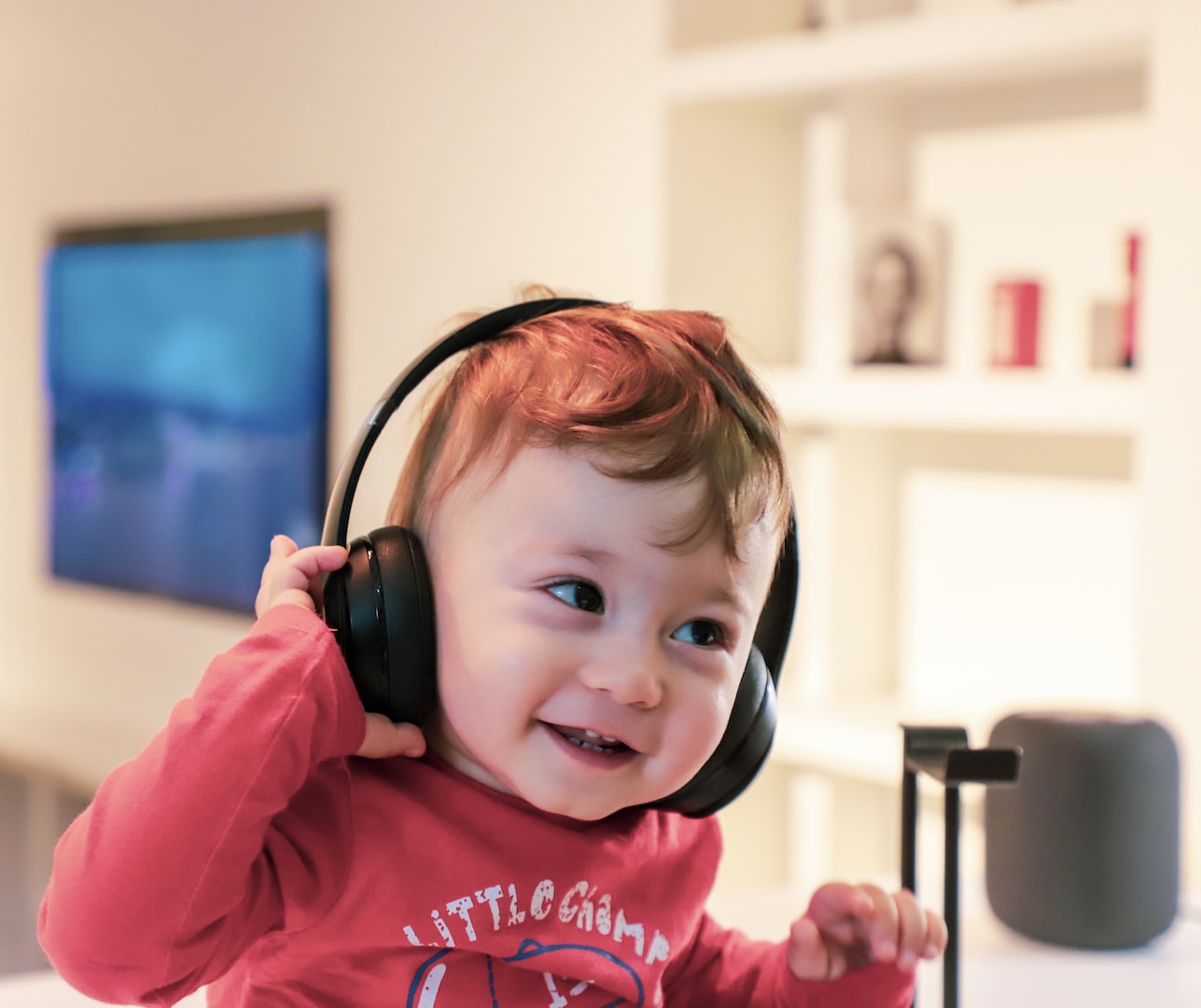
Music is many things – a release for that which we cannot express, a trigger for us to traverse the gardens of the mind, an evoker of emotion and passion, and when the notes reverberate through the soul the spirit connects to all that is beautiful. Music is known to affect the soul: evokes moods, inspires and drives creativity. Music can be something special for the creative as it helps motivate and coax out ideas which lay hiding. Music wrestles the bear that is my unsettled mind.
Music is a powerful tool in many regards. It can serve as a means to connect people through the evoking of emotion, or the chanting of a message. It can cut through the thick fog that sometimes shrouds our mind when we just need a moment of brilliant inspiration and clarity. It can make us sit in somber reverence to the beauty the artist is conveying through their melody. Or it can make us jump up and down and throw ourselves around the studio as we thump our feet and bob our heads to a beat that comes from the pit of our stomach and needs to be set free. It is a beast that the talented, the inspired, can tame.
I completed a survey of the effect of music on artwork when I completed my master’s thesis. I learned that an artist’s creativity level can give us insight into what music means to them and how it influences their artwork. However, one of the things to come out of one survey was that you can’t guess what kind of music affects anyone else. Some of the answers I got from these artists surprised me, as they didn’t really seem to fit with their style of work. But on further thought and discussion, it became more and more obvious that this is why these artists are so good at what they do. They find inspiration in a wide array of sources, not just in the obvious places. So the lesson to take away from this is give every genre of music a go. Don’t blow any suggestion off, thinking it isn’t going to align with your tastes. Doing so could result in missing out on some great, eye-opening music. Explore the odd, the quirky, the weird and soon enough the odd will become normal, the quirky interesting and the weird exciting.
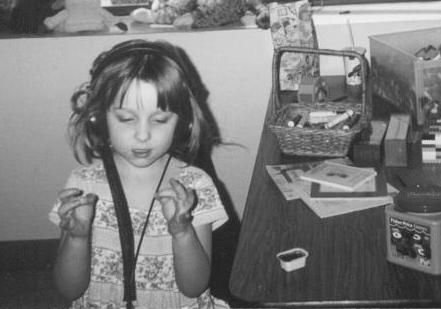
I always enjoyed classical music. Now as a therapist, I can understand and appreciate this style of music for its effect on the mind. Brain research has shown that listening to music (in particular Mozart compositions) can boost attention, memory, learning and motivation. It can also lower stress, help activate both sides of the brain and enhance spatial-temporal reasoning (a conceptual skill needed for math, science and even art studies). The research also suggests listening/playing music in the early years of life may help the brain form patterns that are essential for learning. Many teachers I know use Mozart and other classical music to help with transitions to and from the classroom, and/or during seatwork or just before testing.
The following information was given to me at a training seminar. It seems to be an excerpt from Guilford Publications: Expressive Therapies, edited by Cathy A. Malchiodi - Copyright 2005. I have adapted it some for this book. I am including it to show that even though the general public knows very little about them, the expressive therapies are well respected and used in many professional fields of rehabilitation and interventions.
An easy way for parents to create a multi modal approach is to add specifically designed therapeutic music to their art lesson. Soothing music like classical music is also known to reduce stress and anxiety when the tempo and notes of the music are altered to suit that purpose. One hospital study even found that heart patients received the same anti-anxiety benefits from listening to 30 minutes of classical music as they did from taking the drug Valium.
Here are a few of my favorite CDs to use with art in expressive therapy:
Classical Music DOES Have Benefits
Music, in general, is also known to be beneficial. According to the American Music Therapy Association, music therapy can be used to help:
Cildren, adolescents, adults and the elderly with mental health needs, developmental and learning disabilities
Alzheimer's disease and other age-related conditions
Substance abuse problems
Brain injuries
Physical disabilities
Acute and chronic pain, including mothers in labor
Great Music to Inspire Art –For the professional or amateur
The Mozart Effect –Music for Children Use Vol I Tune Up Your Mind when students need to stay alert and focus. Vol 2: Relax Daydream and Draw is perfect for transitions, calming or during an art or creative class. Volume 2 was Hope’s favorite music to lull her into a creative or peaceful place mentally. I think I have had to replace it 5 times because we use ti so much.
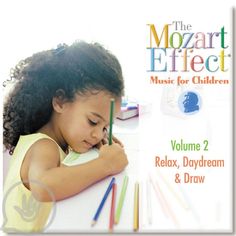
Volume 2 of Don Campbell's Mozart Effect series, Relaxation, Daydream Draw, uses works like Voi Che Sapete from The Marriage of Figaro to create a restful, creative atmosphere. The gentle tempos and melodies of the works on the album let the mind relax, and are perfect for bedtime, daydreaming, or quiet classroom listening. Studies have shown that the music of Mozart has a powerful effect on the intellectual and creative development of children to:
-Increase verbal, emotional, and spatial intelligence
-Improve concentration
-Inspire right-brain, creative thinking processes
-Strengthen intuitive thinking skills
-Induce relaxation and sleep and release stress
-Improve body movement and coordination
-Enhance mood and provide motivation
Don Campbell, musician, teacher and author of the best-selling books The Mozart Effect® and The Mozart Effect for children, has selected some of the best of Mozart’s music to stimulate and inspire young minds, improve intelligence, and help develop the IQ. Based on scientific and psychological studies and up-to-date research in learning and creativity, the music on each of these recordings has been carefully selected according to tempo, key signatures, color and texture in order to provide a rich listening and learning experience for all artistren.
Each CD features world-class performances of some of Mozart’s most powerful – and playful – compositions designed to enhance a particular effect – from tuning up the intellect to inspiring creativity, from improving body movement and coordination to providing motivation.
Where did the "Mozart Effect" begin?
In 1993, psychologist Frances Rauscher published a study in the journal Nature (Nature. 1993 Oct 14;365(6447)) titled "Music and Spatial Task Performance."
The study involved 36 college students who listened to 10 minutes of a Mozart sonata, a relaxation track or silence, then were asked to complete several spatial reasoning tasks (such as determining what a folded paper that was cut would look like when it was unfolded).
The students who had listened to Mozart showed significant improvement (about eight to nine spatial IQ points) in their performance of some of the tasks.

Creators of the world’s most innovative neuroscience based music programs for optimal human performance.
The Sound Health Series is a set of 8 CDs. All are great for classroom or homework time. I use them in my office when I need to create, concentrate or meet a deadline for writing.
Creating Sound Health
By Richard Lawrence
with Dorothy Lockhart Lawrence
Sound Health is unique in the marketplace. Much of this uniqueness comes from the accumulated experience of the team involved in its production. We want to give you a basic idea of the main elements involved and why we believe they make Sound Health so effective.
Choice of Music
Selection is done by integrating a great deal of experience and research. Bulgarian psychiatrist Dr. Lozanov researched the effects of Baroque slow movements on learning and memory. English composer Cyril Scott wrote extensively about the effects of different composers and how their music affected the society of their day. French Medical Doctor Alfred Tomatis experimented using different composers and found Mozart was the most effective for his specific research with hearing and its affect on the brain. Dr. John Diamond has done extensive research into both the effects of listening to certain composers and the intention of the conductors and musicians performing and how this affects the energy they exude. So, from this experience and perspective, we chose music depending on the desired effect of each particular album.
Incorporating Sound Health® into your daily life can produce profound and wonderful changes. A sophisticated combination of therapeutic benefit and artistic achievement, these masterful classical recordings are founded on the principle that music is an effective tool for enhancing health and well-being. Each is intended to complement specific activities, employing extensive scientific research and clinical study to achieve its intended effect. Creating a world of rich and varied soundscapes, Sound Health nourishes body, mind and spirit.
For optimal therapeutic effect, we suggest listening to your chosen recording throughout the day, playing the music softly in the background. No special audio equipment is required - in fact, these CDs can even be played though computer speakers to invigorate or relax you as you work. Use the music to create a desired room ambiance or mask background noise. To intensify your listening experience, slip on a pair of stereo headphones. As with all music, a gentle volume is most effective.
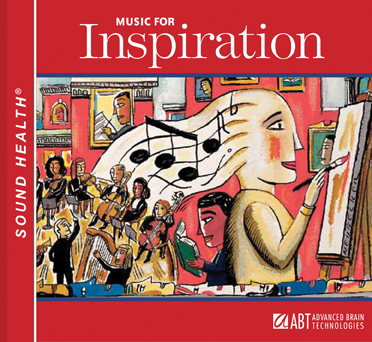
Inspiration
We changed the instrumentation for Mozart’s “Piano Concerto #21.” The solo line is usually of course, played on a Piano. We used a Harp, which gives a much lighter feel. The sound of the Harp has been associated with inspirational and spiritual feelings down through history. In Beethoven’s “Ode to Joy” we include an interlude with Trumpet and Harp early on to give the listener a taste of this wonderful theme which is then performed in a longer, more orchestral version at the end of the album. Tempos mostly range from 60-90 b.p.m. These tempos take one from a body relaxed, mind alert state at 60 b.p.m. up to 90 b.p.m. in order to stimulate the imagination and creative expression
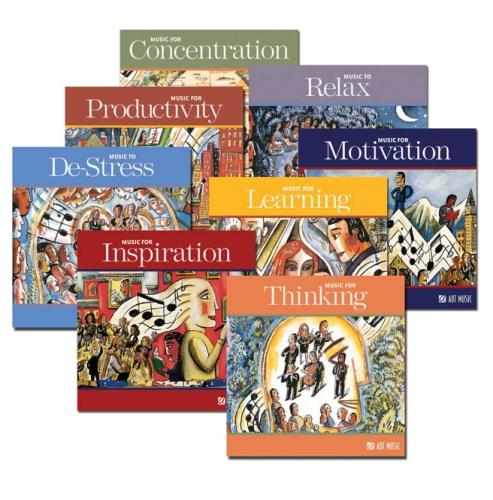
Thinking
This album starts with the amazing slow movement of the “Emperor Concerto” by Beethoven. Here it is rearranged to intensify the mood, generally simplifying some of the orchestral parts to calm the mood even more than Beethoven intended. The same was done with the magical Schubert “Piano Trio.” Here sections were edited out that normally break the relaxed mood. Also, the instrumentation is changed to Viola and English Horn from Violin and Cello. This keeps the range lower and more serene. At times, some of the duet lines are eliminated to keep from over-taxing the listener. In the Brahms “Piano Concerto”, we left off sections that didn’t fit the mood and at times simplified the Piano part by removing excess ornamentation (elements we considered too busy for our purposes). We again changed instrumentation to better fit our intention. This album also features some improvised sections as on the famous “Reverie” by Debussy. Tempos mostly range from 50-60 b.p.m. These tempos stimulate a body relaxed, mind alert state. The result is enhanced clarity and mental alertness.
De-Stress
This album features improvisation more than any other in our series, which provides more soothing, flowing musical expression. Another major element is the use of the Mahler “Adagio” which has been edited to keep only the most relaxing sections. All of the improvisations were inspired by the Mahler theme. This gives a wonderful consistency to the music on the album. One of the production techniques used was to simulate the sound of an orchestra playing in a cathedral. I was very struck by this effect when I played Mahler’s “Fourth Symphony” with one of the BBC Orchestras in Wells Cathedral in England. In the middle of the album, some quite different elements are introduced to intensify the effect. These include ocean sounds and a low Bass to simulate a foghorn. Later a gentle English Horn is used to play fragments of the Mahler theme. All of this was designed to keep the listener in a lower frequency range to enhance relaxation. Tempos mostly range from 30-60 b.p.m. Our slowest tempos are designed to relax tension, decrease anxiety, and at times even induce sleep.
Music For Babies
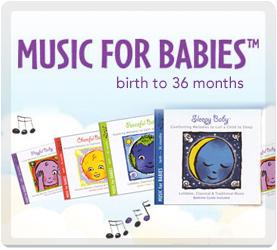
The following award-winning recordings include classical, folk music, and instrumental versions of lullabies and nursery rhymes that nurture the rapidly developing brains of artistren from birth to three.
Just as food nourishes a baby's growing body, the elements of music - melody, tone and harmony -nourish a baby's rapidly developing brain. Even before artistren are born, research shows that music has a beneficial effect on the network of neurons that will be the foundation of their later learning, language development and music ability.
By helping create a peaceful and loving home environment, These CDs help build stronger family relationships. Another great benefit is the strengthening of the parent-artist bond. Today, we see countless Moms, Dads, young artistren and babies sitting together on the living room floor listening to these magical recordings.
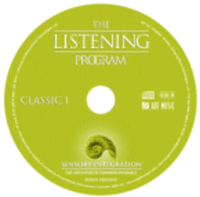
Sensory integration is the process of taking in information about the world around us with all our senses and from inside our own bodies. Through integrating and organizing the senses of vision, auditory, touch, movement, muscle awareness, taste, and smell, we are able to interact comfortably and efficiently in work, play and through social interaction.
How Important is Sensory Integration?
Broadly stated, sensory integration is the brain's organization of sensory input. As we move, touch, are touched, and place pressure on our joints and limbs, the brain is informed about the body's position in space and where our various parts are in relation to one another. The integration of these senses allows us to move them in a coordinated fashion. Through effective sensory integration, the many parts of the nervous system work together so that a person can interact with his environment effectively and experience the joy of unconscious coordinated movement.
The efficient organization of sensory input forms the foundation for all higher learning. Many problems in attention, reading and writing have their basis in poor or disorganized sensory input. Many interventions, therefore, address sensory integration problems by using a variety of tactile, motor and movement activities to help the organization of sensory input and function of the vestibular system.
Dr. Alfred Tomatis was among the first to recognize that sound can be used to stimulate the vestibular portion of the vestibulocochlear system, and therefore the body. The vestibule is a small part of the inner ear adjoining the cochlea, which is the hearing part of the inner ear. The vestibule includes three semicircular canals, the utricle and saccule. These fluid-filled chambers have small hair cells that move in response to motion and inform the body about acceleration and deceleration movements, up and down movements, and also rotational movements.
Many techniques that occupational therapists trained in sensory integration utilize are aimed at stimulating the vestibular system. SI Classic 1 incorporates sound specifically designed to help address this important integration of sensory information. Music recorded with specific emphasis in low and mid range frequencies, such as the cello and bass viola, has been used to enhance and support stimulation to and awareness of the body.
The Recordings
The music selected and recorded for Sensory Integration Classic CD 1 include compositions by Mozart, Bach, Salieri, Telemann and Richard Lawrence
The Benefits You Can Expect
Sensory Integration Classic CD 1 stimulates the lower frequencies to help people who have problems related to the vestibular system and integration of sensory input. Although this is not an all inclusive list, issues that may be helped include:
Balance
Movement
Coordination
Rhythm
Body schema
Left-right discrimination
Spatial awareness
Sensory defensiveness
Hypersensitive hearing
Emotional regulation
Individuals on the autistic spectrum benefit greatly from this CD as do those who need to a better sense of their body, feeling more comfortable and grounded through the stimulation of the lower frequencies before experiencing CDs with high pass filtration such as those in The Listening Program Classic Kit.
Additionally, SI Classic 1 may help with athletic ability through improved body and spatial awareness, as well as improved balance and motor integration.
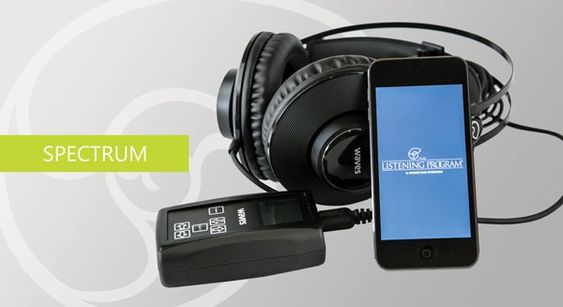
Systematic training is provided through listening to psychoacoustically modified classical music which trains the brain to process sound more efficiently. This leads to improvements in:
Learning
Attention
Communication
Reading
Listening
Sensory Processing
Social Engagement
Behavior
Self Regulation
Musical Ability
Brain Fitness
Daily Living
Children, teens, adults and seniors can use the program in the home, classroom or workplace. Completely portable and easy to use, The Listening Program fits easily into anyone's schedule and only requires 15 to 30 minutes of daily listening.
The Listening Program is a fusion of beautiful art and sound science. The masterful performances of the award-winning players of the Arcangelos Chamber Ensemble are skillfully crafted using advanced audio technologies to provide an unrivaled listening experience.
Numerous studies worldwide, including research at the University of Sheffield, provide empirical evidence that substantiate The Listening Program's efficacy. And while that affirms The Listening Program's credibility, for many the question remains, how does The Listening Program work?
The Listening Program's psychoacoustically modified music and patent-pending production techniques are designed to stimulate or "exercise" the different functions of the auditory processing system. This enables the brain to better receive, process, store and utilize the valuable information provided through the varied soundscapes in our lives such as music, language and the environment in which we live.
The listening schedule is 30 minutes per day, 5 days a week. Complete this powerful program in the comfort of your home, dorm or office.
So the question becomes...how can we overcome auditory processing challenges - moving from a "disorganized" to an "organized" system.
Certain classical music, like that of Mozart, Haydn and Vivaldi, has specific structure, producing sound waves in organized patterns. Within these patterns are vital elements including time, frequency and volume. When listening to music, the ear is receiving the musical sound waves - waves that arrive in different frequencies, measured in Hertz (Hz). These frequencies stimulate the brain, and thus affect different functions of the mind and body.
Specific Frequencies for Specific Functions
The Listening Program combines decades of clinical research in several fields, including neurology, physiology, psycho-acoustics, auditory processing, music theory and more. The method builds on the work of respected leaders in these fields, such as ear, nose and throat (ENT) physician Alfred A. Tomatis, M.D. (1920-2001). Among other discoveries, Dr. Tomatis helped identify the relationship between certain sound frequencies and their effect on their functions of the mind and body. A simplified explanation of Dr. Tomatis' findings shows that certain brands, or zones, of sound frequencies affect different abilities.
TLP is designed to address these zones, systematically providing auditory stimulation that, when customized for listeners by ABT Providers, can help improve their ability to function in a number of ways.
Add more detail about this feature, such as benefits or value
Add more detail about this feature, such as benefits or value
Add more detail about this feature, such as benefits or value